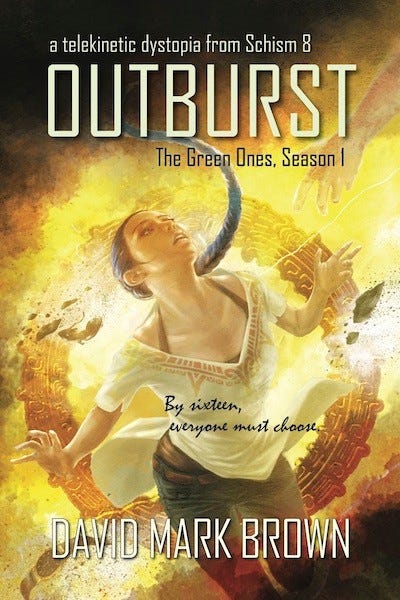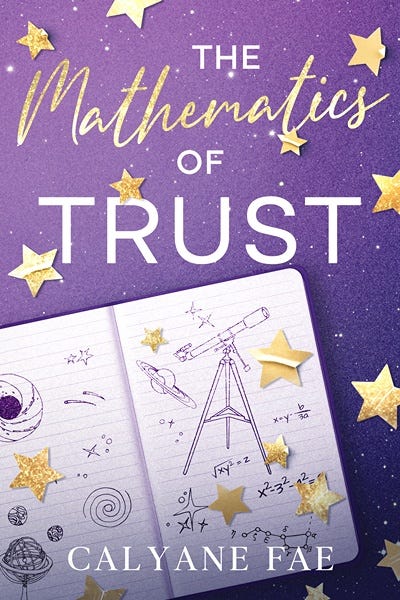From AI Draft to Real Story: Building a Fantasy Trilogy from Scratch
The Working Desk Project
A few months ago, I fed AI a Lord of the Rings-style prompt and asked it to write a complete fantasy novel. (The original post is linked above.)
It delivered 20,000 words in under an hour.
Here’s how it opened:
In the soft-breathing valley of Elderglen, where no iron clanged and no hoofbeat stirred the mossy paths, dawn spilled like golden honey across the fields. The sun, gentle and curious, peered through low-hanging fog as if reluctant to disturb the dreams of such a quiet land.
The AI wrote a beautiful intro. It built a world with sound, texture, and strong visuals. It’s intros like this that terrify writers. If an AI can effortlessly write great sentences, what am I here for?
But stories are more than descriptions. While this story had some intriguing passages, the characters were flat. The humor was nonexistent. The pacing lurched from scene to scene without depth. There was no real tension, and the climax was literally the same as Lord of the Rings—just with different names.
The prose mimics Tolkien’s style without understanding what made Tolkien matter. It arranges words beautifully while saying nothing meaningful.
But buried in that 20,000-word mess, three elements caught my attention:
A human-like character with roots like a tree.
An antagonist who replicated things—not perfectly, but just enough to create lies that turned allies against the hero.
And a magic system based on truth and memory.
So I threw out AI’s story and started building my own—a complete fantasy trilogy, using those elements as a starting point.
And I’m writing it in public, so you can watch the entire process—the good, the bad, the AI conversations, and how I direct AI to develop my story.
What This Project Is
This isn’t a course or tutorial series, and I’m not another writing guru telling you what to do.
It’s an actual book being written for publication—and you get to see me work through each step of the process.
But more than that, it’s an answer to the question every writer using AI is asking right now:
“Can I use AI to help me write without becoming a worse writer?”
That’s the reader question driving this project. And the answer isn’t simple. It depends on what you do before you open ChatGPT. It depends on whether you know your story’s emotional core. It depends on whether you can protect your unique perspective while letting AI amplify your thinking.
I want you to finish your novel using AI to help—but I want it to still sound like YOU and be something you’re proud of.
That’s the emotional target: confidence that the tools are serving your craft, not replacing it.
My unique perspective? I’m a data scientist and author who’s spent years figuring out how to use AI without losing my voice.
Each post consists of two parts:
The Public post (free for everyone) explains what I did and why. High-level decisions. The results. What worked and what didn’t.
Subscriber posts show the complete process.
How I develop and leverage my reader question.
Sections of the manuscript.
Prompts I used.
AI conversations with my commentary on what’s useful and what’s not.
Beat sheets.
Character sketches.
The moments when I realize the plot is broken and I have to rebuild it from scratch.
This is hands-on craft work, not theory.
When the AI gives me ideas and they’re all generic fantasy tropes, you’ll see that conversation. When I spend days wrestling with a scene because the character motivation isn’t working, you’ll see those drafts.
When I ask the AI for help and it gives me something brilliant, you’ll see that too—along with how I adapted it to fit my story.
Most “writing in public” projects show you the highlight reel. The hero’s journey after the hero already won.
I want to show you reality. The one with wrong turns, dead ends, and breakthroughs that only come after hours of frustration.
The goal: inspire you to finish your own novels while leveraging the available tools in a craft-first way—where the human stays at the center and AI amplifies what you create.
What You’ll Learn
This trilogy is the vehicle. The craft-first approach is the lesson.
By following this project, you’ll see exactly how to:
Use AI as a thinking partner, not a ghostwriter. You’ll watch me ask AI questions that deepen my understanding of character motivation, story structure, and emotional pacing—without letting it write the story for me.
Apply the reader question framework in real-time. Every scene I write, every plot decision I make, gets tested against the trilogy’s core question. You’ll see when I drift off course and how I course-correct.
Protect your voice while leveraging AI’s capabilities. You’ll see the moments when AI suggestions are brilliant and when they’re generic. More importantly, you’ll learn how to tell the difference.
Know when to ignore AI completely. Some creative work has to stay purely human. You’ll see which decisions I never delegate to AI and why.
Most writing advice tells you what to do. This project shows you how someone actually does it—mistakes, dead ends, and all.
The craft-first approach isn’t about rejecting AI. It’s about using these tools intentionally, in service of the deeper work that only humans can do: understanding what it means to be alive and helping others feel less alone in that understanding.
The First Post Drops Now
“From AI Draft to Real Story: Rebuilding The Emberborn Oath”
Subscribers will see:
Key excerpts from AI’s novel with my honest reactions
Why I’m starting this trilogy and what I hope to explore
The 3 fragments that survived and why they caught my attention
What comes next
The early posts won’t be heavy on AI—because right now, it’s about figuring out what I actually want to write. The AI work comes later, once I know where I’m going.
Each post has two parts: public (what I did) and subscriber-only (the complete process).
If you want to watch a fantasy trilogy get written from scratch, subscribe now.
Welcome to The Working Desk.
Subscribers, check your email for the first post: From AI Draft to Real Story: Rebuilding the Emberborn Oath!
And, of course, today’s books!
Logwood Tea: An Outburst Prequel
By sixteen, everyone must choose.
A telekinetic dystopia from Schism 8
For the telekinetic youth of New Teotihuacan’s Worker City there are two choices: an enslaved life or a free death. By sixteen, everyone must choose.
Brown’s page-turning, dystopian adventure revolves around a heroine who must maintain her humanity in the midst of monstrous decisions. His vivid rendering of telekinesis births a complex, mysterious, and provocative world that reveals itself to the reader in a kaleidoscope of detail the longer one chooses to stare through his fractured lens. The Green Ones series is a mix of The Hunger Games, Ready Player One, and Ender’s Game.
The Mathematics of Trust
She watched them break his heart. Now she’s asking him to trust hers.
A slow-burn new adult romance about second chances, trust, and finding love when you’re trying not to
Set against the backdrop of a Berlin prep school, THE MATHEMATICS OF TRUST is a slow-burn new adult romance about the courage it takes to be seen, the grace it takes to forgive, and the beautiful, terrifying risk of opening your heart to someone who has every reason to keep theirs closed.
Perfect for readers who love wounded heroes, academic romance, slow burns, forced proximity, and emotional stories about trust and second chances.
Sunlight
In an alternative dystopian future, the city of Sovereign falls victim to a sinister plot.
A fast paced action filled dystopian story.
Revolution is in the air, the Kingdom Isle is on the brink of collapse, and enemies are closing in on all sides.
Nathan’s decision will set off a chain of events which cannot be done, igniting the flight of a giant war machine, the awakening of a demi-god, and beginning of the end. Prisoners will escape, special agents will seek revenge, and revolutionaries will rise in the first instalment of the epic sci-fi action-adventure series: Titans, Cranes & Monsters’ Games.
Save The World
Twenty Sci-Fi Writers Fix the Planet
20 sci-fi stories of how we might solve climate change
We asked sci-fi writers to send us stories about ways to save the world from climate change. From the myriad of stories we received, we chose the twenty most amazing (and hopefully prescient) tales.
The future’s not going to fix itself.







